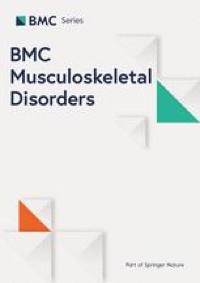Abstract
Objective
Spinopelvic alignment is increasingly considered as an essential factor for maintaining an energy-efficient posture in individuals with normal or pathological status. Although several previous studies have shown that changes in the sagittal spinopelvic alignment may occur in patients undergoing total hip arthroplasty (THA), no review of this area has been completed so far. Thus, the objective of this scoping review was to summarize the evidence investigating changes in spinopelvic alignment and low back pain (LBP) following THA.
Data sources
We adhered to the established methodology for scoping reviews. Four electronic databases were systematically searched from inception-December 31, 2021.
Study selection
We selected prospective or retrospective observational or intervention studies that included patients with THA.
Data extraction
Data extraction and levels of evidence were independently performed using standardized checklists.
Data synthesis
A total of 45 papers were included in this scoping review, involving 5185 participants with THA. Pelvic tilt was the most common parameter measured in the eligible studies (n = 26). The results were not consistent across all studies; however, it was demonstrated that the distribution of pelvic tilt following THA had a range of 25° posterior to 20° anterior. Moreover, decreased sacral slope and lower pelvic incidence were associated with increased risk of dislocation in patients with THA. Lumbar spine scoliosis did not change significantly after THA in patients with bilateral hip osteoarthritis (5.50°(1.16°) vs. 3.73°(1.16°); P-value = 0.29). Finally, one study indicated that LBP improvement was not correlated with postoperative changes in spinopelvic alignment parameters. Several methodological issues were addressed in this study, including no sample size calculation and no type-I error adjustment for outcome multiplicity.
Conclusions
Changes in spinopelvic alignment may occur after THA and may improve with time. Patients with a THA dislocation usually show abnormal spinopelvic alignment compared to patients without a THA dislocation. LBP usually improves markedly over time following THA.




Δεν υπάρχουν σχόλια:
Δημοσίευση σχολίου